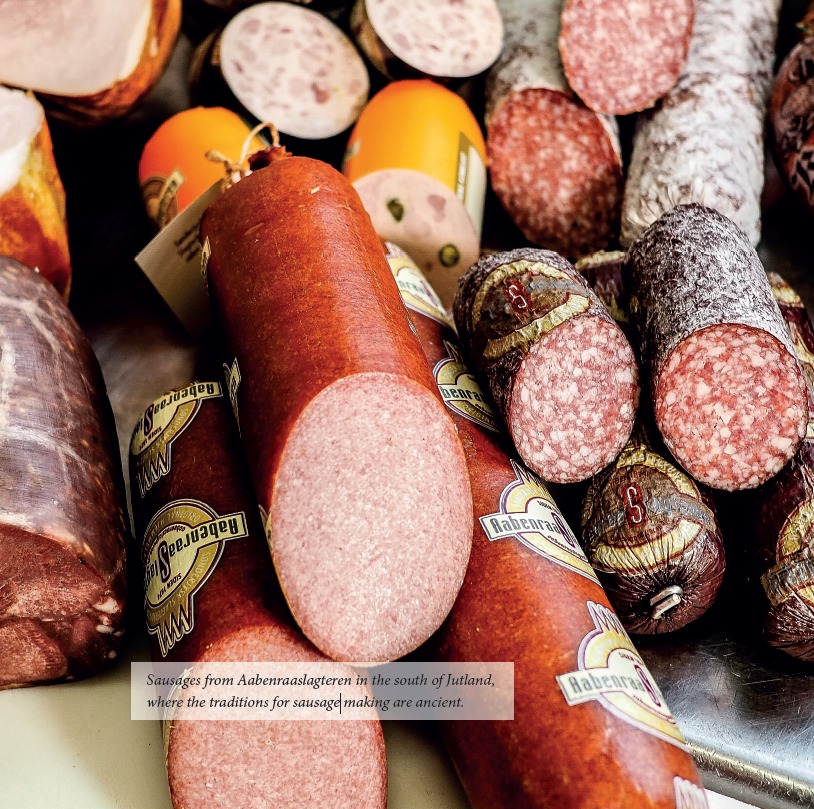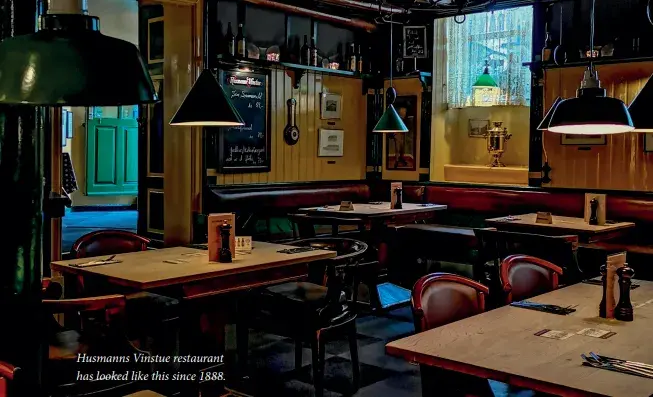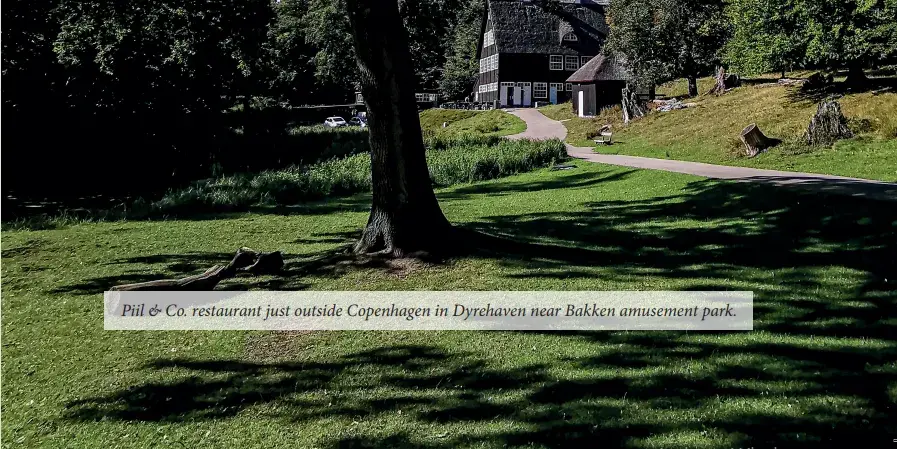As luxury smørrebrød emerged in the 1890s, abundant meat toppings played an all-important role.
Sausage has long been an important part of the Danish diet, and it is one of the most popular toppings on everyday smørrebrød. In particular, the Italian-inspired salami has been a staple in most packed lunches through the 1900s. The same is true for leverpostej, the French-inspired pâté with pork liver and fat, and for boiled ham. Together with egg and cheese, these three meat toppings have dominated the Danish lunch.
Just as the rugbrød from South Denmark near Germany was inspired by its neighbour, so too does the sausage-making tradition owe a debt to the Germans. The finest Danish sausage masters have always been found in the southeren region of Jutland – Sønderjylland – which borders Germany. Here, you can find several butcher shops with more than 100 years of histo-ry, like Aabenraa Slagteren, which was founded by Hans Henrik Johansen’s great grandfather in 1876.
Sometimes, in the middle of the night, Mrs. Johansen wakes up because her husband is gently lifting the duvet, swinging his legs out over the edge of the bed, and quietly leaving the bed-room. Shortly afterwards, she hears the front door close, and his car start and quietly drive away. It doesn’t worry her in the least, because she knows that when the weather suddenly turns – if, for example, a storm sets in – Hans Henrik Johansen has to go down and look at his sausages. He has sausages hanging in the smoke oven at all times to ensure there are always freshly smoked sausages in the store. Although the sausages basically take care of themselves, a change in the force of the wind can mean that temperature and damper adjustments are needed for a perfect sausage smoking.
‘I know it sounds like a strange thing to do, but my father did it, and I remember his father did it before him,’ explains Johansen. The strategy runs in the blood, much like the recipe for blood sausage that is as old as the family business itself in both Germany and Denmark. His-tory explains the cultural connection between Germany and Denmark. Germany occupied the southern part of Denmark from 1864 to 1920, after which the Danish flag again waved over the region. Since then, the street signs along the border have had both Danish and German word-ing. The culture still flows freely between the two nations, just as the sausage making traditions have done for hundreds of years. However, these traditions have flowed most strongly in the direction from Germany to Denmark, explains Johansen, who himself worked in Germany as a young man.
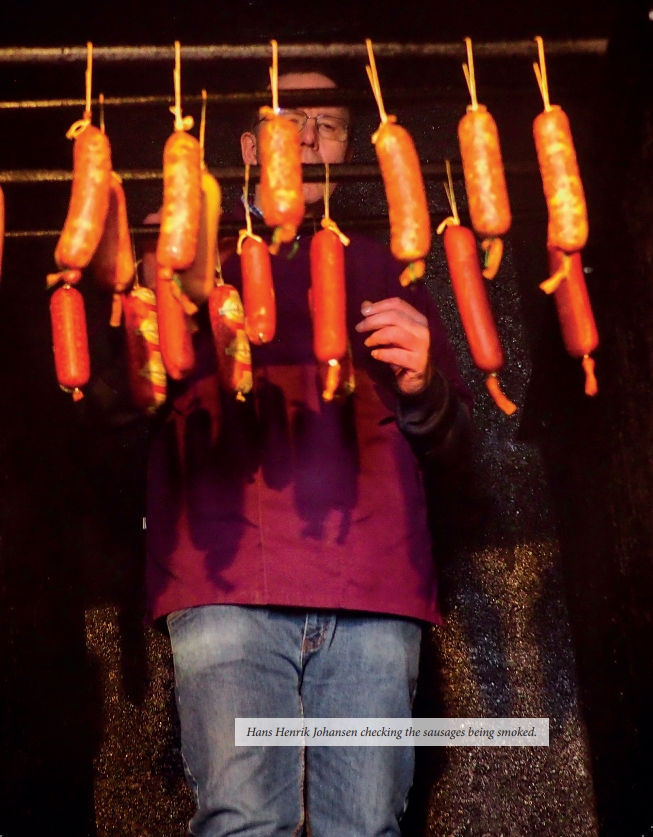
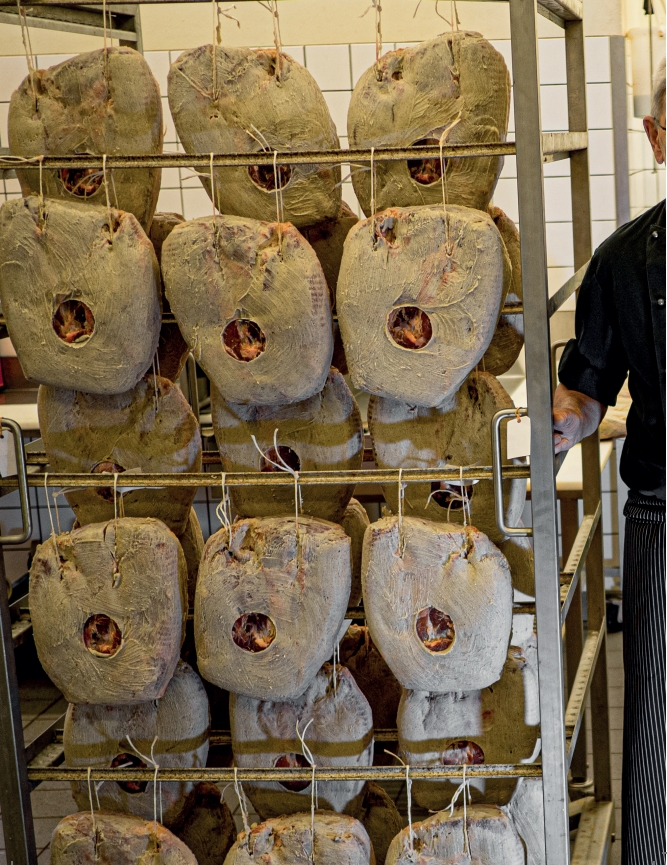
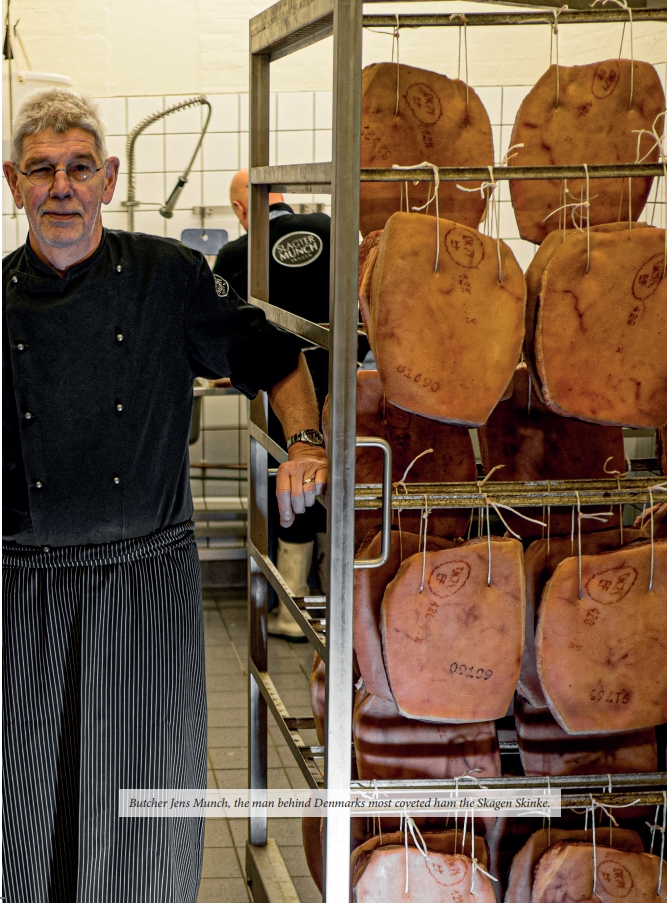
‘Our sausage heritage is no doubt German,’ he says during our meeting in the small sausage factory that still bears traces of its 1930s founding. At the centre of the workshop is a three-metre-high sausage stuffing device: it begins with a metre-wide funnel into which the stuffing is poured, and ends in a thin spout from which the sausage skin is pulled. Among the various butcher chores, sausage making has always been closest to Johansen’s heart. This is obvious when he describes the earliest sausages.
‘The first time that sausages are mentioned in world literature is in Homer’s Iliad, though even older cave paintings have been found in China, that depict sausage making. These 4,000- year-old paintings show people stuffing meat into an intestine, and this is also what Homer de-scribes in a scene, in which the Greeks had been fighting the Persians: After the battle, they relax and eat grilled sausages.’
Johansen recalls this history as he stands in front of a steel table where dozens of various sau-sages are on parade. He continues with the tale of how the first Roman cookbook, Apicius from the first century, has recipes for sausage making, and how, centuries later, the Italian speciality travelled to Germany.
‘This was in 1419 when a new cathedral was being built, and Italian workers were hired, be-cause of their expertise in building domes. The workers would make grilled sausages in their tents, and this speciality caught on and became a German speciality. Still today you can visit a monastery restaurant in Regensburg serving grilled sausages,’ says Johansen.
Johansen, who himself offers a selection of 40 different sausages, explains that the tastes for sausage vary in different regions of Denmark.
‘Here in the south, we prefer milder flavors. The most popular sausage is Sønderjysk Spege-pølse, a soft salami with pork meat and pork fat. But north of Kolding, 60 kilometres away, they prefer a more firm sausage, and over on Zealand, they prefer more spicy sausages.’
Usually, the farther away from Sønderjylland you travel, the simpler the sausage selection be-comes. The exception is in Copenhagen where the city’s size and economy meant a larger sau-sage assortment than out in the country’s provinces.

